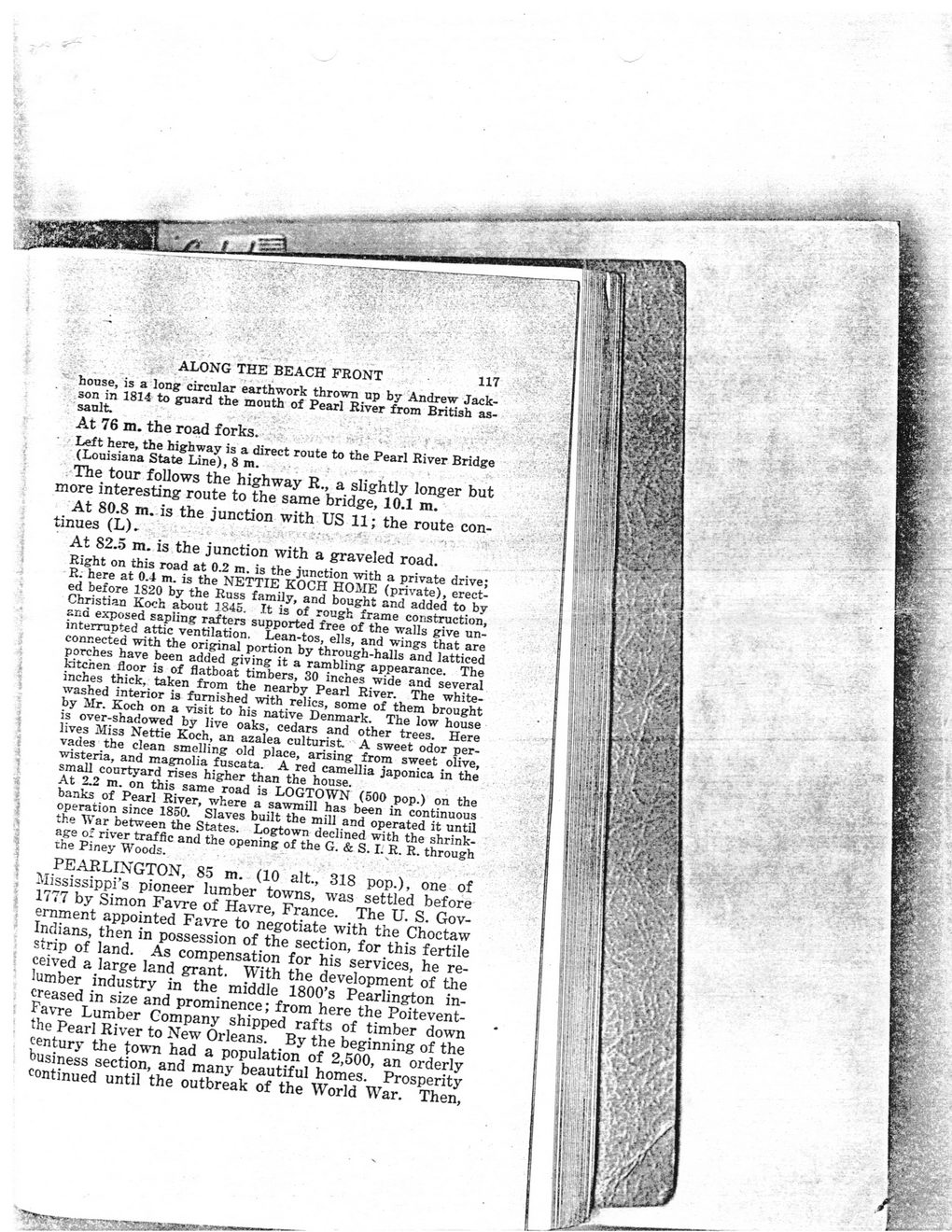This text was obtained via automated optical character recognition.
It has not been edited and may therefore contain several errors.
ALONG THE BEACH FRONT 117 ; house, is a long circular earthwork thrown up by Andrew Jackson in 1814 to guard the mouth of Pearl River from British assault. , At 76 m. the road forks. '■ - ■ Left here, the highway is a direct route to the Pearl River Bridge (Louisiana State Line), 8 m. The tour follows the highway R., a slightly longer but more interesting route to the same bridge, 10.1 m. At 80.8 m. is the junction with US 11; the route continues (L), At 82.5 m. is the junction with a graveled road. Right on this road at 0.2 m. is the junction with a private drive; R. here at 0.4 m. is the NETTIE KOCH HOME (private), erected before 1S20 by the Russ family, and bought and added to by Christian Koch about 3845. It is of rough frame construction, and exposed sapiing rafters supported free of the walls give uninterrupted attic ventilation, Lean-tos, ells, and wings that are connected with the original portion by through-halls and latticed porches have been added giving it a rambling appearance. The kitchen floor is of flatboat timbers, 30 inches wide and several inches thick, taken from the nearby Pearl River. The whitewashed interior is furnished with relics, some of them brought by Mr. Koch on a visit to his native Denmark. The low house is over-shadowed by live oaks, cedars and other trees. Here lives Miss Nettie Koch, an azalea culturist. A sweet odor pervades the clean smelling old place, arising from sweet olive, wisteria, and magnolia fuscata. A red camellia japonica in the small courtyard rises higher than the house. At 2.2 m. on this same road is LOGTOWN (500 pop.) on the banks of Pearl River, where a sawmill has been in continuous operation since 1850. Slaves built the mill and operated it until the War between the States. Logtown declined with the shrinkage of river traffic and the opening of the G. & S. I. R. R. through the Piney Woods. PE ARLINGTON, 85 m. (10 alt., 318 pop.), one of Mississippi’s pioneer lumber towns, was settled before 1777 by Simon Favre of Havre, France. The U. S. Government appointed Favre to negotiate with the Choctaw Indians, then in possession of the section, for this fertile strip of land. As compensation for his services, he received a large land grant. With the development of the lumber industry in the middle 1800’s Pearlington increased in size and prominence; from here the Poitevent-Favre Lumber Company shipped rafts of timber down the Pearl River to New Orleans. By the beginning of the century the town had a population of 2,500, an orderly business section, and many beautiful homes. Prosperity continued until the outbreak of the World War. Then,

BSL 1930 To 1949 MS Gulf Coast WPA American Guide Series (9)